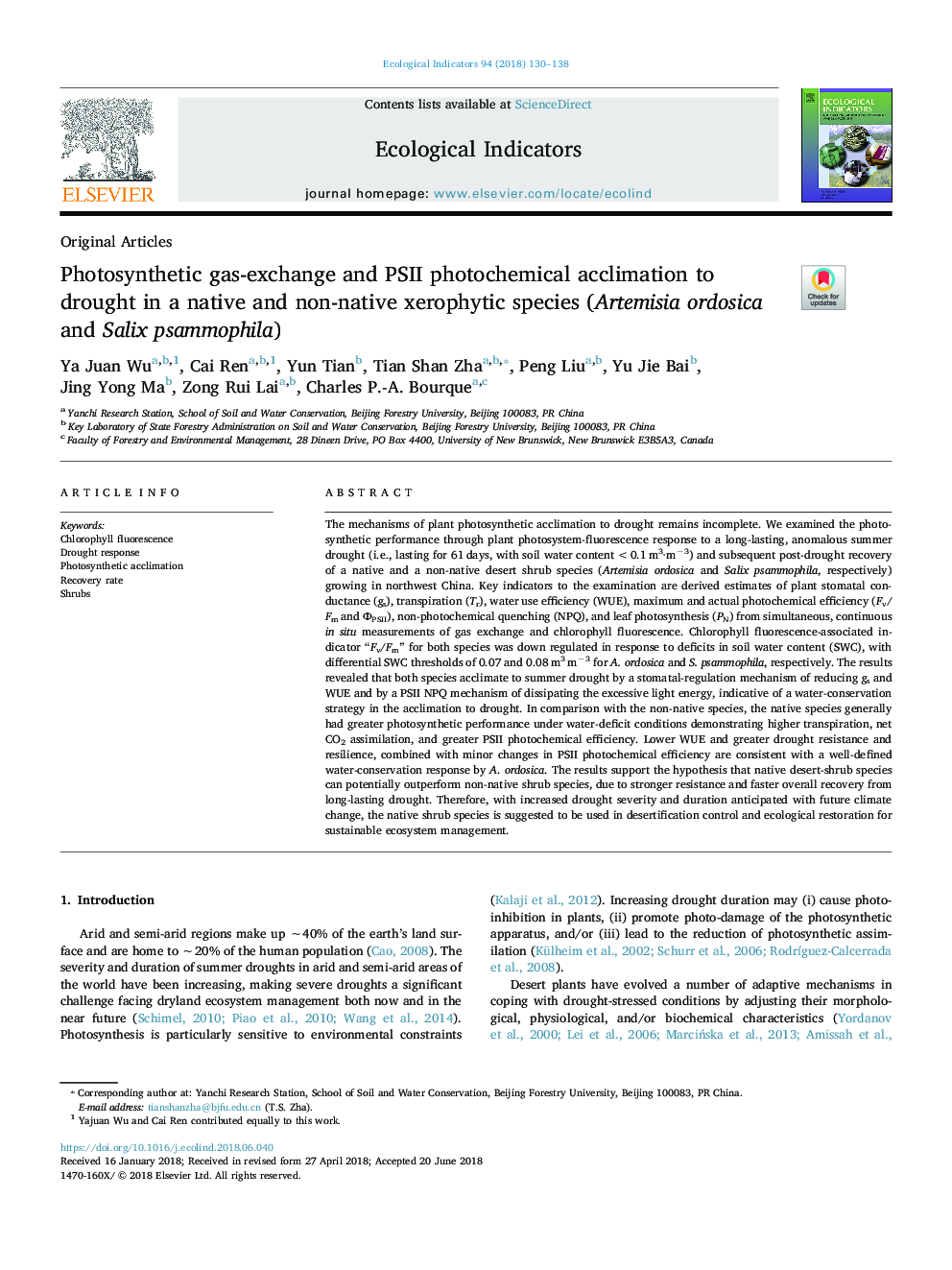| Article ID | Journal | Published Year | Pages | File Type |
|---|---|---|---|---|
| 8845013 | Ecological Indicators | 2018 | 9 Pages |
Abstract
The mechanisms of plant photosynthetic acclimation to drought remains incomplete. We examined the photosynthetic performance through plant photosystem-fluorescence response to a long-lasting, anomalous summer drought (i.e., lasting for 61â¯days, with soil water content <0.1â¯m3·mâ3) and subsequent post-drought recovery of a native and a non-native desert shrub species (Artemisia ordosica and Salix psammophila, respectively) growing in northwest China. Key indicators to the examination are derived estimates of plant stomatal conductance (gs), transpiration (Tr), water use efficiency (WUE), maximum and actual photochemical efficiency (Fv/Fm and ФPSII), non-photochemical quenching (NPQ), and leaf photosynthesis (PN) from simultaneous, continuous in situ measurements of gas exchange and chlorophyll fluorescence. Chlorophyll fluorescence-associated indicator “Fv/Fm” for both species was down regulated in response to deficits in soil water content (SWC), with differential SWC thresholds of 0.07 and 0.08â¯m3â¯mâ3 for A. ordosica and S. psammophila, respectively. The results revealed that both species acclimate to summer drought by a stomatal-regulation mechanism of reducing gs and WUE and by a PSII NPQ mechanism of dissipating the excessive light energy, indicative of a water-conservation strategy in the acclimation to drought. In comparison with the non-native species, the native species generally had greater photosynthetic performance under water-deficit conditions demonstrating higher transpiration, net CO2 assimilation, and greater PSII photochemical efficiency. Lower WUE and greater drought resistance and resilience, combined with minor changes in PSII photochemical efficiency are consistent with a well-defined water-conservation response by A. ordosica. The results support the hypothesis that native desert-shrub species can potentially outperform non-native shrub species, due to stronger resistance and faster overall recovery from long-lasting drought. Therefore, with increased drought severity and duration anticipated with future climate change, the native shrub species is suggested to be used in desertification control and ecological restoration for sustainable ecosystem management.
Related Topics
Life Sciences
Agricultural and Biological Sciences
Ecology, Evolution, Behavior and Systematics
Authors
Ya Juan Wu, Cai Ren, Yun Tian, Tian Shan Zha, Peng Liu, Yu Jie Bai, Jing Yong Ma, Zong Rui Lai, Charles P.-A. Bourque,
